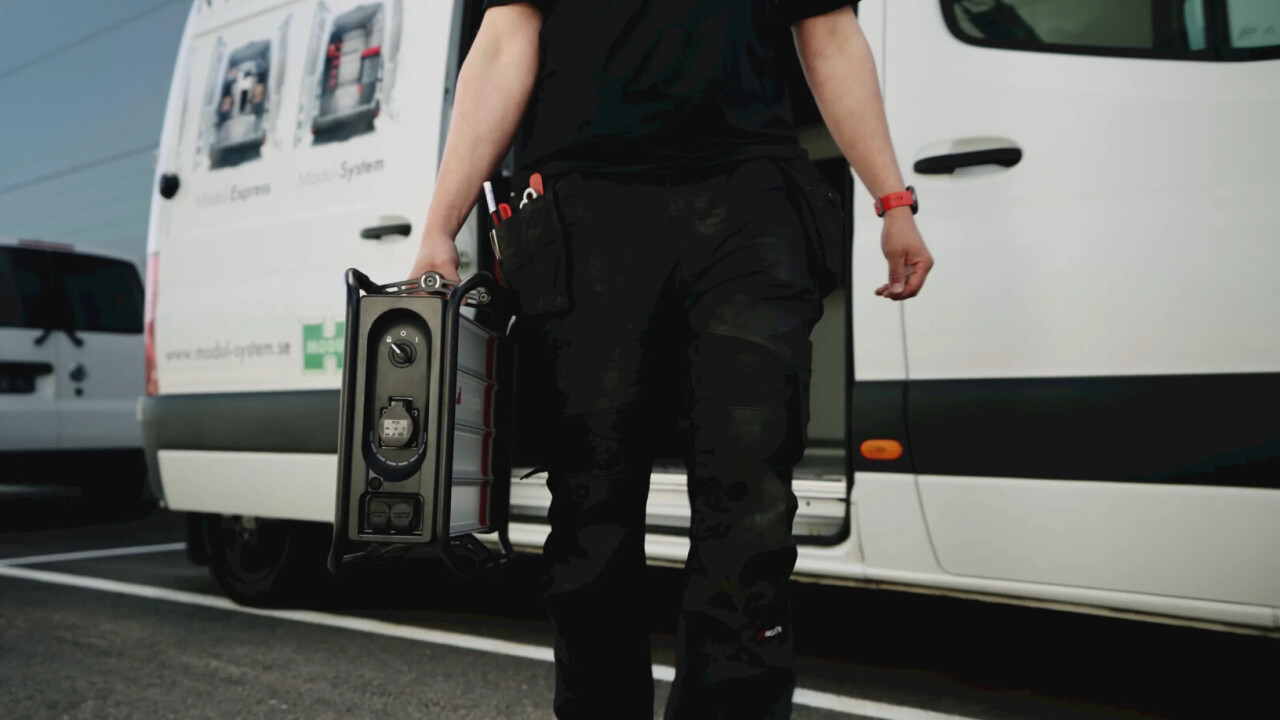
When engineers working for the Swiss Federal Railways (SBB) have some welding to do out on a section of track, they don’t have to fire up a diesel generator anymore. They can plug their tools into a portable battery instead. A silent, emissions-free battery that can also power lights and measuring instruments.
The SBB now has around 80 batteries made by Instagrid, a fast-growing startup headquartered in Germany. Welding requires a significant burst of energy so the batteries have to come with a kick.
“That is what we are specifically good at, the power density,” asserts Andreas Sedlmayr, co-founder and CEO of the firm, which employs 150 people and has raised $145 million to date. The name of the company is short for “instant grid” — which is what it’s meant to feel like, says Sedlmayr. As though you’ve brought access to the electricity grid with you, in a box.
Finding the power bank sweet spot
Batteries are increasingly indispensable as homes and industries electrify in the transition away from fossil fuels. But batteries tend to be either small and weak or powerful and ginormous. A handful of startups want to change that and find the sweet spot in the middle — power banks, they say, can be both punchy and portable.
In January, Instagrid announced a Series C funding round totalling $95 million, and plans to expand into the North American market. “We’re doubling every year — that’s basically what we need to keep this growth,” comments Sedlmayr of the investment, which he says will help Instagrid “go global.”

The firm currently has two products available for sale. The Instagrid ONE weighs 20 kg and can supply 2.1kWh. The separate Instagrid LINK attaches to the ONE to boost capacity up to a total of 6.3kWh and supply several tools or appliances at once.
Later this year, the company will begin testing a new offering with customers, the Instagrid MOVE. This will be a much bigger battery, the size of a small trailer on wheels, that can be towed behind a vehicle. It will have a capacity of 249kWh and is due to become commercially available in the first half of 2025.
Battery power and control
Sedlmayr explains that the company has worked hard to develop software that controls how these batteries discharge power, in order to get the maximum energy out of them while avoiding overheating. They rely on a multitude of battery blocks and inverters within the device, meaning power conversion can happen in multiple places internally rather than just one.
“The software is basically determining which cell, in which millisecond, is connected to the output,” says Sedlmayr. A bit like a barn full of mules kicking open their stable doors sporadically but on demand.

One of the benefits of portable batteries is the ability to use them for different tasks in a short space of time — just haul them over to wherever they are required, says Edward Barbour at Loughborough University’s Wolfson School of Mechanical, Electrical and Manufacturing Engineering.
“You can start to get your battery cycling an awful lot — the more you cycle your battery, the better the economics are,” he says, referring to the process of charging and discharging a battery repeatedly.
Barbour questions whether batteries are yet ready to replace diesel generators in situations requiring high-level, all-day power. Use cases will naturally depend on exactly how much power a customer requires — Sedlmayr says that tests involving construction companies in the EU showed that it was possible to rely on the batteries for powering tools such as circular saws across an entire day.
Another company, Allye (pronounced “ally”), in the UK, is also working on a large but transportable 320kWh battery named “the Max”. “The footprint is smaller than a typical parking space,” says co-founder and CEO Jonathan Carrier. “You can lift them with a forklift.” Allye has raised £900,000 and has 11 employees.
Cutting costs using smart energy storage
The Max is due to become commercially available later this year and Carrier says it could be of use to film and TV crews on location, construction teams or mining operations. There’s nothing stopping you using the battery as a stationary solution, too, he stresses.
A supermarket, for example, could use one to store energy when it is available at off-peak, cheaper tariffs via the grid. Then, during peak hours, the fridges and lights in the store could switch to running on the battery. This “grid flexibility”, managed automatically by Allye’s software, could save customers in excess of 50% of their electricity costs, estimates Carrier. The savings could rise further if they pair the system with solar panels, too.
“We’re introducing what’s called energy storage-as-a-service,” he adds. “You don’t pay for the asset [bar a one-time installation fee], you just subscribe on a monthly basis.” The subscription would consume around 40-50% of the electricity cost savings enabled by the system and contracts would last two to three years, after which customers could either extend or end the contract.
Plugging in to existing connections
The first installation of an Allye Max battery took place last year, at an electric vehicle and aircraft charging station in the south of England. In the UK, one significant barrier to the rollout of charging stations and renewables infrastructure such as solar panels is the difficulty of getting access to upgraded grid connections. However, Carrier says the Max batteries will help customers bypass this by plugging into existing connections. “Our solution stores energy from the grid on a much lower power output,” he explains.
It could even work in residential areas – for instance, a handful of homes on a street all connected to one of these batteries, so that they may access energy and store it at times when it is available at a lower price. That could happen overnight, or on occasions where there is a high level of renewable energy available on the grid. To implement such a system in the UK would likely require regulatory reform, though, says Carrier.
Vijay Ramani of Washington University in St Louis, US, who studies energy storage systems, says that portable and transportable batteries will likely appeal to those who want to live or work off-grid. Though for applications that require more power, other technologies such as flow batteries — in which energy stored in liquid electrolytes is pumped into the battery cell — might be a better choice. “Those tend to be cheaper at scale,” he explains.
That said, devices such as the Instagrid MOVE and the Allye Max could be a good choice for facilities of the appropriate size that want to ensure that they always have backup power, suggests Ramani.
“For people who value having uninterrupted power and who lose money if they lose power, essentially, they would be willing to pay for something like this,” he says.
Get the TNW newsletter
Get the most important tech news in your inbox each week.





